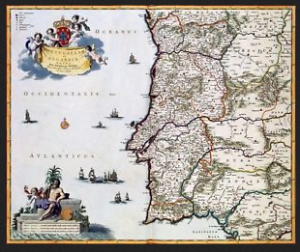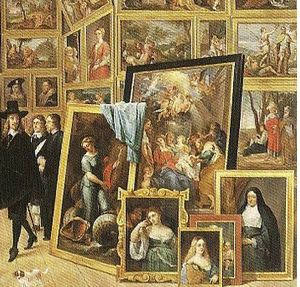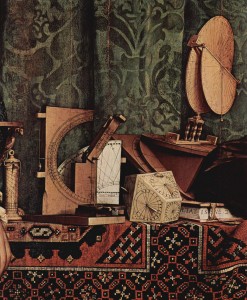Posté par Damien Bril, le 23 janvier 2014;
- Date et lieu du colloque : 4-6 février 2015, Lisbonne
- Date limite : 1er février 2014
Collecting through Connections: Glass and Stained-glass Collectors and their Networks in the 19th Century
EXTENDED DEADLINE: 1st February 2014
 The Research Unit VICARTE – Glass and Ceramic for the Arts and Parques de Sintra – Monte da Lua (entrusted with the management of Pena National Palace) are organizing the international conference « Collecting through Connections: Glass and Stained-glass Collectors and their Networks in the 19th Century », which will be held in Lisbon from the 4th to the 6th of February of 2015. The Research Unit VICARTE – Glass and Ceramic for the Arts and Parques de Sintra – Monte da Lua (entrusted with the management of Pena National Palace) are organizing the international conference « Collecting through Connections: Glass and Stained-glass Collectors and their Networks in the 19th Century », which will be held in Lisbon from the 4th to the 6th of February of 2015.
For this conference, we invite abstracts focusing on 19th century collecting practices for glass and stained glass. Selected papers will be published before the conference.
The aim . . . → En lire plus
Posté par Damien Bril, le 24 décembre 2013;
- Date limite : 30 janvier 2014
Collecting and Displaying in Portugal: From João V to the Estado Novo
Edited by Foteini Vlachou (Instituto de História da Arte, Faculdade de Ciências Sociais e Humanas, Universidade Nova de Lisboa)
 During the last two decades, the interest in Portuguese collecting and collectors, as well as objects commissioned and purchased abroad during the maritime expansion has known a significant surge. The publications and exhibition catalogues of scholars such as Maria Antónia Pinto de Matos (the specialist on Chinese export porcelain) or Annemarie Jordan Gschwend have drawn attention to the extensive commerce of luxury and exotic goods between Portugal and her colonies. Other scholars, such as João Carlos Pires Brigola have pioneered . . . → En lire plus During the last two decades, the interest in Portuguese collecting and collectors, as well as objects commissioned and purchased abroad during the maritime expansion has known a significant surge. The publications and exhibition catalogues of scholars such as Maria Antónia Pinto de Matos (the specialist on Chinese export porcelain) or Annemarie Jordan Gschwend have drawn attention to the extensive commerce of luxury and exotic goods between Portugal and her colonies. Other scholars, such as João Carlos Pires Brigola have pioneered . . . → En lire plus
Posté par Olivier Bonfait, le 11 septembre 2013;
- Date limite : 1er décembre 2013, 1er décembre 2013
Call for Papers : RIHA Journal invites submissions for a Special Issue on
« Collecting Italian Art North of the Alps 1600–1800 »
 The Italian schools occupied central positions in early modern art collections, a tradition that continued through the 19th and 20th centuries. The primacy of Italian art became a cornerstone for museum practice as well as a founding principle for the nascent art history discipline. This issue takes a closer look at the beginning of this tradition in the 17th and 18th century. Since the 1960s (and before), scholars have taken an interest in the Grand Tours of princes, aristocrats and connoisseurs. More recent research has added to the picture by discussing the collecting activities of artists, . . . → En lire plus The Italian schools occupied central positions in early modern art collections, a tradition that continued through the 19th and 20th centuries. The primacy of Italian art became a cornerstone for museum practice as well as a founding principle for the nascent art history discipline. This issue takes a closer look at the beginning of this tradition in the 17th and 18th century. Since the 1960s (and before), scholars have taken an interest in the Grand Tours of princes, aristocrats and connoisseurs. More recent research has added to the picture by discussing the collecting activities of artists, . . . → En lire plus
Posté par Pascale Dubus, le 16 juillet 2013;
- Date limite : 15 octobre 2013
- Date et lieu du colloque : 23-25 avril 2014, Autriche, Université de Vienne.
 Paper and panel proposals are invited for Scientiae 2014, the third annual conference on the emergent knowledge practices of the early modern period (ca. 1450-1750). The conference will take place on the 23-25 April 2014 at the University of Vienna in Austria, building upon the success of Scientiae 2012 (Simon Fraser University) and Scientiae 2013 (Warwick), each of which brought together more than 100 scholars from around the world. Paper and panel proposals are invited for Scientiae 2014, the third annual conference on the emergent knowledge practices of the early modern period (ca. 1450-1750). The conference will take place on the 23-25 April 2014 at the University of Vienna in Austria, building upon the success of Scientiae 2012 (Simon Fraser University) and Scientiae 2013 (Warwick), each of which brought together more than 100 scholars from around the world.
The premise of this conference is that knowledge during the period of the Scientific Revolution was inherently interdisciplinary, involving complex mixtures of practices and objects which had yet . . . → En lire plus
Posté par Sébastien Bontemps, le 9 juillet 2013;
- Date limite : 11 novembre 2013
- Date et lieu du colloque : 10-12 avril 2014, Londres
 London, Royal College of Art, April 10 – 12, 2014 Deadline: Nov 11, 2013 London, Royal College of Art, April 10 – 12, 2014 Deadline: Nov 11, 2013
CFP for the annual Association of Art Historians conference, 2014 at the Royal College of Art, London
New Approaches to Collecting (1400-1600) Session Convenor: Leah Clark
This panel seeks submissions that address new approaches to collecting in the early modern world. Scholars have long been attentive to the emergence of the studiolo in the Italian Renaissance and its relationship to humanism and the revival of classical culture, pursuing connections between art, antiquity, politics, knowledge, and power. Traditional approaches to collecting have tended to concentrate on collectors’ tastes within larger patronage studies, analysing inventories as lists of static objects, or by examining the iconographic programmes of . . . → En lire plus
|
Équipe Rédacteur en chef : Olivier Bonfait.
Rédacteurs : Elliot Adam (Moyen Age) ; Nicolas Ballet (XX-XXIe siècles) ; Matthieu Fantoni (musées) ; Antonella Fenech Kroke (bourses) ; Vladimir Nestorov (Lettre mensuelle)
Administrateur web : Matthieu Lett.
ancien éditeur : Pascale Dubus
anciens rédacteurs : Gautier Anceau, Sébastien Bontemps, Damien Bril ; Sébastien Chauffour ; Ludovic Jouvet ; Aude Prigot
|
 The Research Unit VICARTE – Glass and Ceramic for the Arts and Parques de Sintra – Monte da Lua (entrusted with the management of Pena National Palace) are organizing the international conference « Collecting through Connections: Glass and Stained-glass Collectors and their Networks in the 19th Century », which will be held in Lisbon from the 4th to the 6th of February of 2015.
The Research Unit VICARTE – Glass and Ceramic for the Arts and Parques de Sintra – Monte da Lua (entrusted with the management of Pena National Palace) are organizing the international conference « Collecting through Connections: Glass and Stained-glass Collectors and their Networks in the 19th Century », which will be held in Lisbon from the 4th to the 6th of February of 2015.



